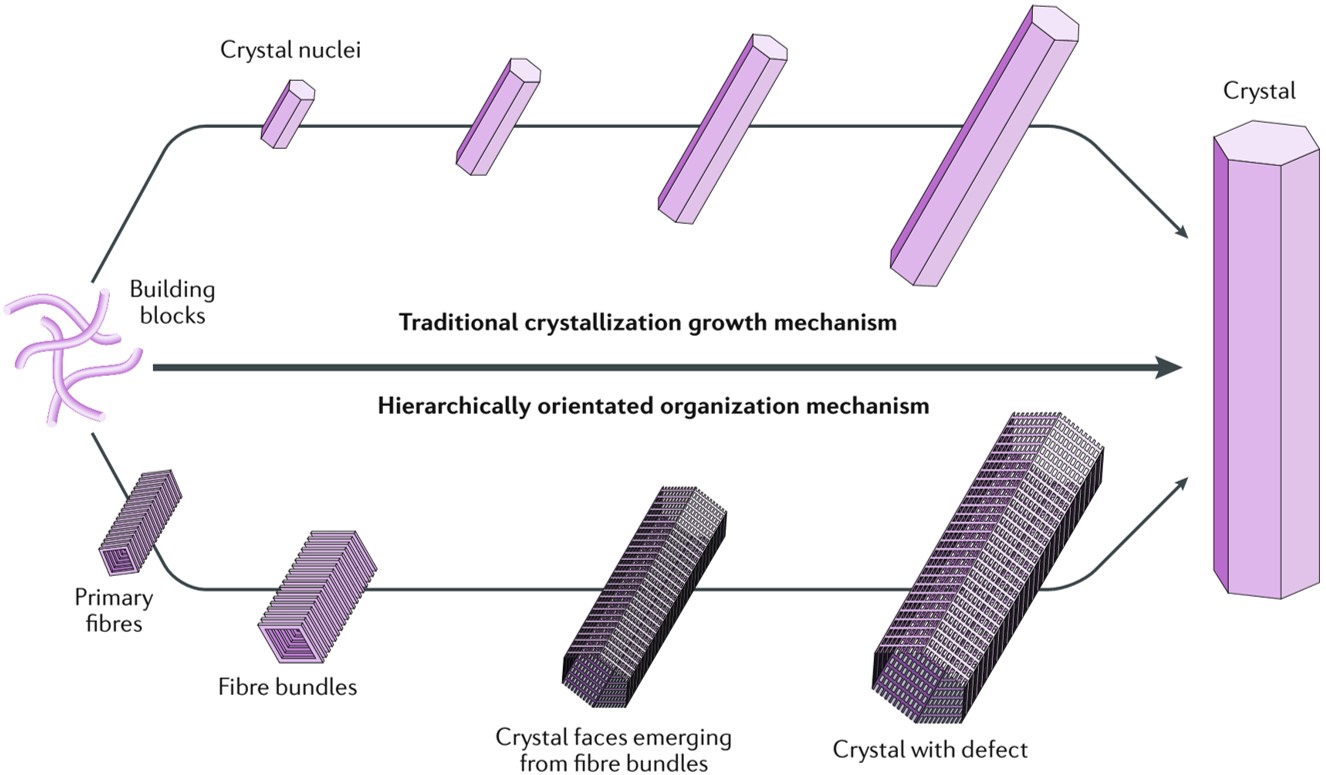A research group led by Prof. YAN Xuehai from the Institute of Process Engineering (IPE) of Chinese Academy of Sciences (CAS), in collaboration with researchers from University of Tel Aviv and the Institute of Chemistry of CAS, proposed the hierarchically oriented organization mechanism of supramolecular peptide crystals.
This new mechanism, which is distinct from the traditional crystallization growth mechanism based on the Ostwald ripening process, provides theoretical guidance for the design and development of novel supramolecular functional materials. The study was published in Nature Reviews Chemistry (DOI: https://doi.org/10.1038/s41570-019-0129-8).

Fig.1 Schematic illustration of the classical and hierarchically oriented organization mechanism (Image by YAN Xuehai )
Hierarchical self-assembly and crystallization with long-range ordered spatial arrangement is ubiquitous in nature, and plays an essential role in the regulation of structures and biological functions such as protein transport, signal transduction and cell division.
Research on the fundamental mechanisms underlying the hierarchical self-assembly and crystallization is crucial for understanding the materials’ structure and function, and further gaining insights into the development of novel complex biomaterials. However, it is still a critical challenge to modulate the thermodynamics and kinetics of self-assembly process to achieve the controlled nucleation-elongation of simple biomolecules self-assembly, aiming for the construction of hierarchical architectures and crystals.
Researchers from IPE have been working on the self-assembly of biomolecules (especially short peptides) and their physicochemical mechanisms for many years, and made a series of progress in the molecular mechanism of short peptide self-assembly.
In their previous works, they have fabricated a variety of functional supramolecular materials by controlling molecular structures of peptides or combining with pigments, and developed their biomedical applications. (J. Am. Chem. Soc. 2017, 139, 1921-1927; J. Am. Chem. Soc. 2018, 140, 10794-10802; Angew. Chem. Int. Ed. 2018, 57, 17084-17088; Angew. Chem. Int. Ed. 2019, 58, 2000-2004).
Moreover, they pay more attention to the initial stage prior to nucleation of short peptide self-assembly. It is discovered that trace water molecules serve as key pioneers to induce the formation of stable noncovalent peptide clusters. Such molecular clusters further trigger the nucleation and subsequent growth (ACS Nano 2016, 10, 2138-2143; Small 2017, 13, 1702175; Angew. Chem. Int. Ed. 2019, 58, 5872-5876).
In this study, they and their collaborators discovered the general rule governing supramolecular peptide crystal formation through the statistical analysis of the multiscale hierarchical structures frequently found in the peptide self-assembly process, and proposed the theoretical model of “hierarchically oriented organization” for formation of supramolecular peptide crystals.
This principle is also applicable to other small organic molecules, and is expected to be widely used in the self-assembling crystals and accurate construction of molecular materials.
Media Contact:
LI Xiangyu
Public Information Officer
Institute of Process Engineering, Chinese Academy of Sciences, Beijing 100190, P. R. China.
E-mail: xiangyuli@ipe.ac.cn
Tel: 86-10-62551358
 Search
Search




 京公网安备110402500047号
京公网安备110402500047号